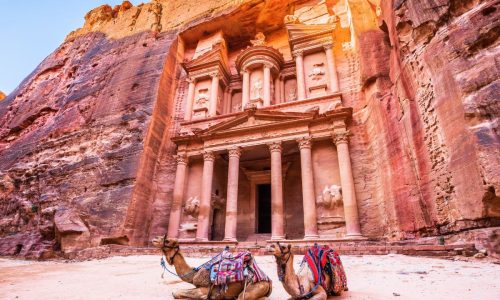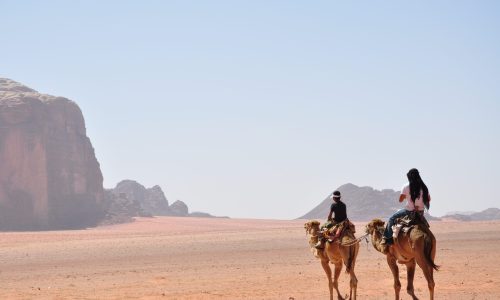Luxury Jordan Tours
Visit the land where unparalleled local hospitality prevails, a country of mesmerizing lunar landscapes and rich culinary heritage… a place where history and cultures converge in ancient Roman cities, replete with important biblical sites, desert adventures and modern trappings.
Best time to visit Jordan
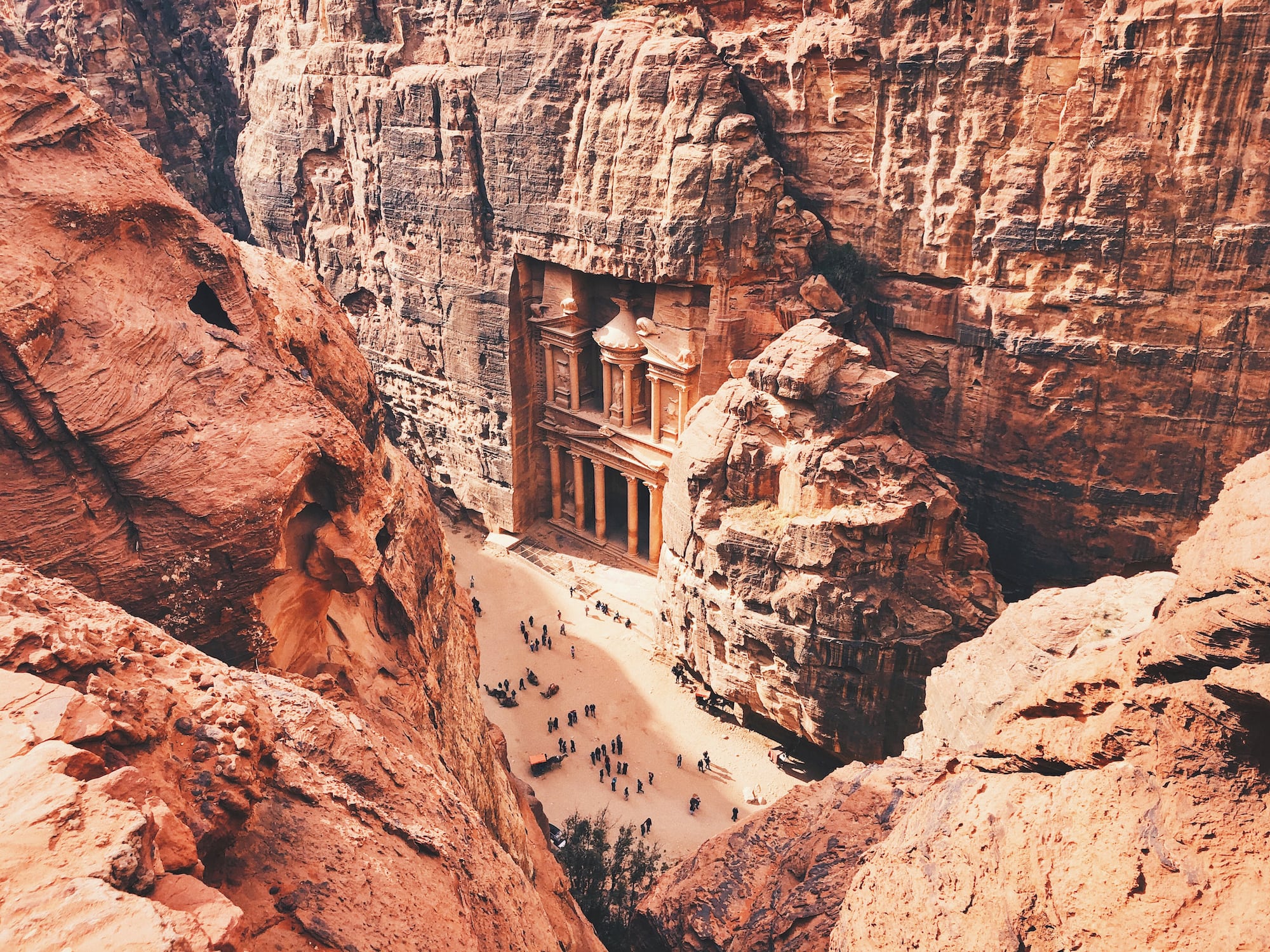
The land of Ancient Wonders
While Petra is indeed one of the most stunning attractions in the Middle East, Jordan offers so much more for the modern traveler. A well-traveled caravan route between the seas and the desert, the Hashemite Kingdom of Jordan is a land of mesmerizing beauty and contrasts, from the ever changing Jordan Valley to the remote and eerie desert canyons.
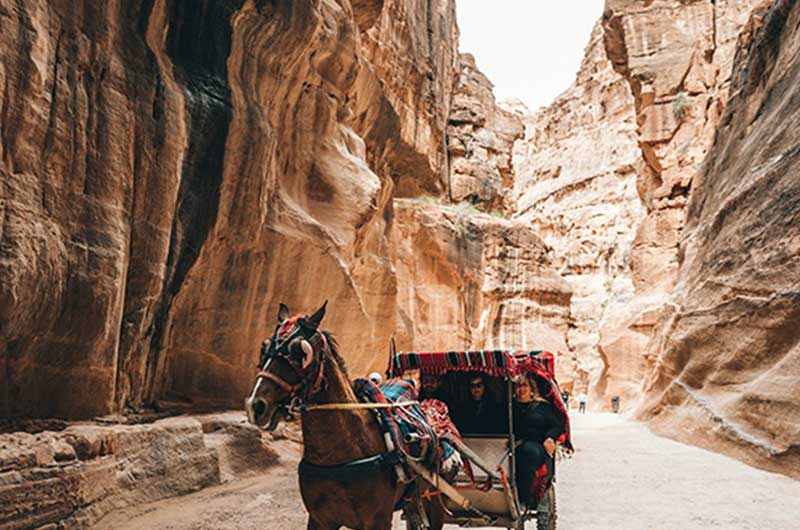
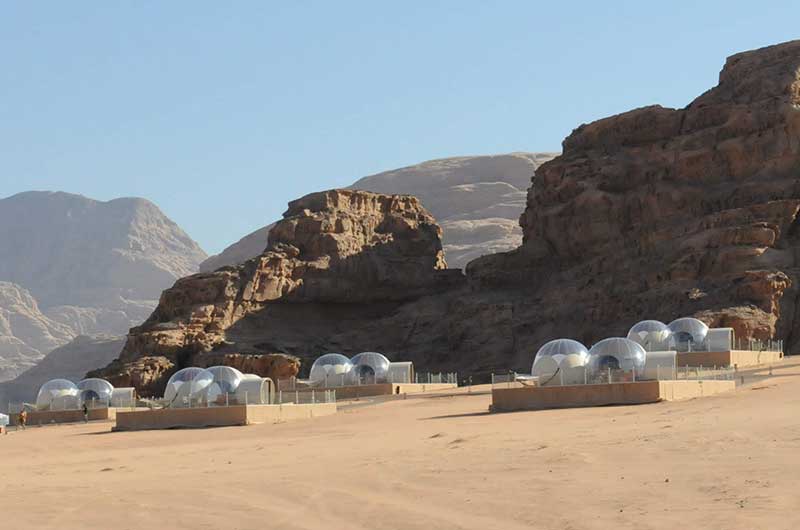
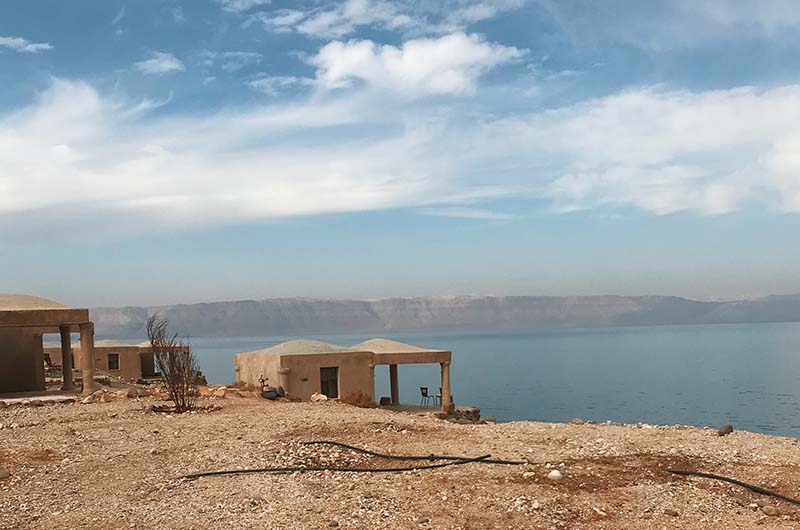
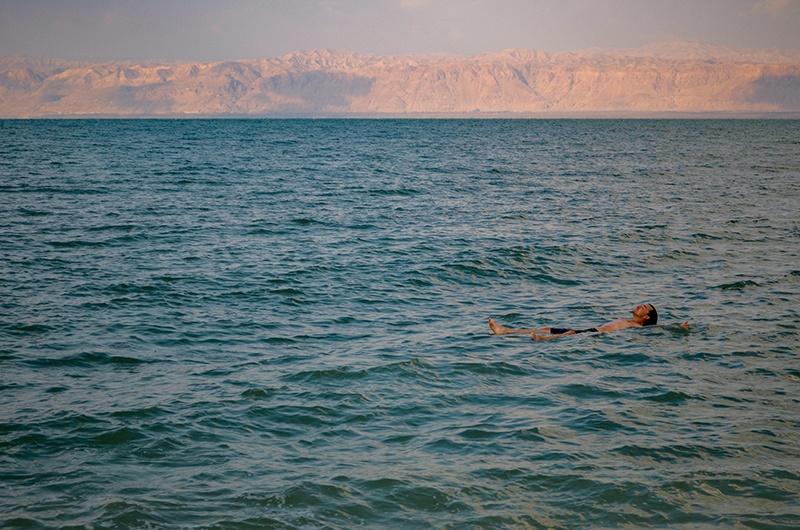
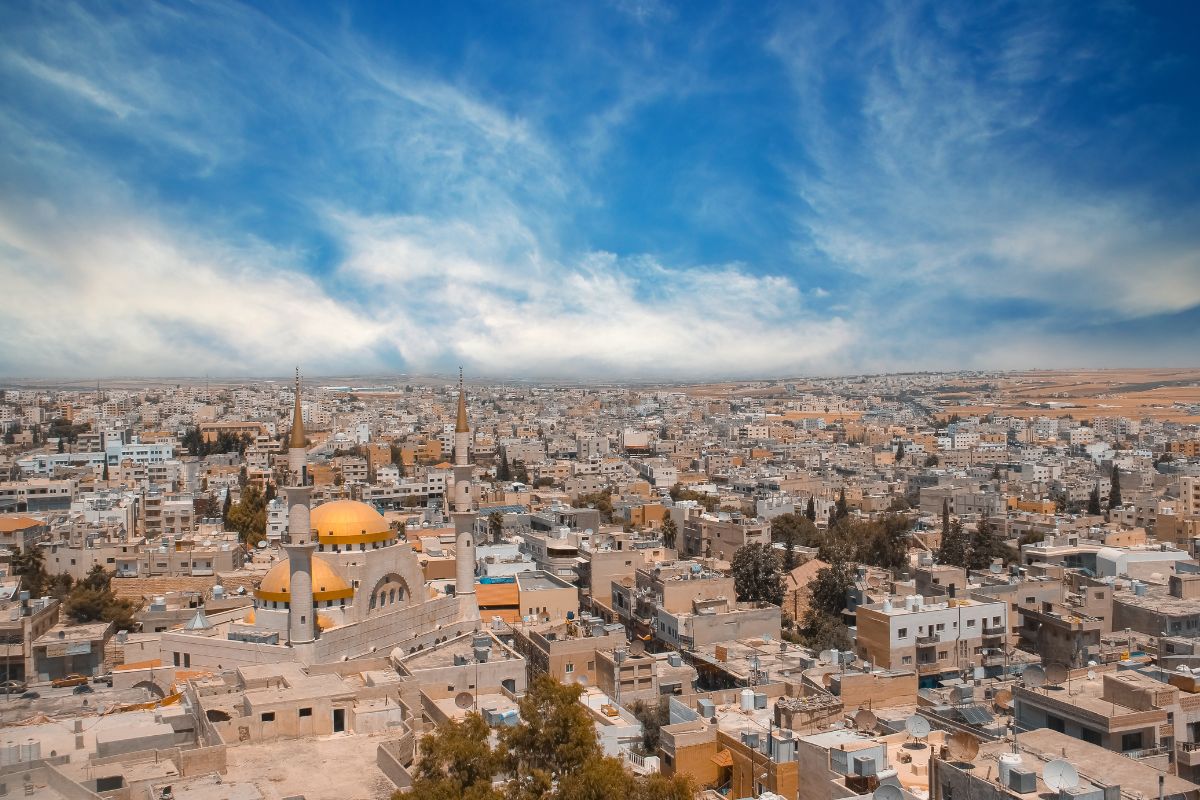
Month-by-month guide for traveling in Jordan
March in Jordan is the ideal for outdoor enthusiasts to go on desert hikes. The rains and the icy winter storms would have just ended. The colors of Jordan start to bloom, the northern parts with lush green valleys covered with blankets of wildflowers look like a fantasy land.
April is most definitely a great time to visit Petra, Wadi Rum and other top attractions in Jordan. With mild weather conditions in April, Jordan starts to buzz with global travelers, making it the high season for travel. So, if you plan to visit in April make sure to book your trip well in advance.Factoid: every 7 years or so, during March through May, you can witness a unique opportunity – the rare black iris flowers bloom! Not easy to find but a breathtaking sight if luck is on your side.
Early May climate is a great time for sightseeing and hiking. It’s also the best to visit Petra and Wadi Rum. In late May the temperatures start to rise bringing in the infamous sand storms in the desert. Called ‘Khamseen’, these storms blanket the cities with sand dust and overcast skies.
Late June is the start of summer in Jordan. The temperature starts to creep higher – its classic hot and dry Middle Eastern weather, but it’s still not as hot as July and August, so grab that slot before it gets beyond melting point. If you are used to the heat then with the right itinerary you can still explore this beautiful country.
July is hottest in Jordan with off peak airline fares. Temperatures hover close to 100°F and when the ‘khamseen’, (sand storm) blows the temperatures rise even further. July could be tough on visitors wanting to explore the top attractions like Petra or Wadi Rum but as we said each season has its perks – the flights and accommodation costs are much lower and offer a more relaxed crowd free experience. With clear skies July is also the right time for stargazing, and the famous Perseid meteor shower appears in July.
August is the best time to watch the meteor showers in Wadi Rum. August is the hottest time of the year with temperatures climbing above 100F! August is the best time for stargazing and to catch the spectacular Perseid meteor showers from your luxe desert camp in Wadi Rum. Every year around the second week of August this impressive astronomical event reaches its zenith in Wadi Rum making it a desirable location.
September is the best time to float in the Dead Sea. After the blazing heat, September transitions to Fall season with temperatures quickly cooling down. With few hot outlying days, temperatures will soon mirror the Spring season. The September water temperature in the Red Sea is warm and inviting with very good visibility for underwater activities.
Mid-October Jordan starts to really cool down. The October rains bring back the lush green landscapes making it a great time for outdoor activities like hiking.
In November it is cold, and with fewer travelers the best high end accommodations are easier to be had at bargain prices. But the warm water in the Red Sea keeps the demand high in the south of the country, inviting water lovers and divers.
December – brrr, freezing temperatures keeps most travelers away from Jordan.
January the chilly winter winds and rains continue, and even the locals choose to lay low.
February continues to be cold, but it starts thawing towards the end of February and with spring just around the corner this might be the sweet spot of the year you have been waiting for.
No matter what season you plan to visit, a customized itinerary will highlight the best places to visit and things to do in Jordan. Connect with xplorearth travel advisors for in-depth information before you plan your travel.
Itinerary '7 days in Jordan'
Get ready for an unforgettable Jordan, Amman, Petra, Dead Sea trip

Day One: Arrive in Amman and explore the marvelous Roman archaeological ruins in Jerash.
Day Two: Drive to Petra and experience a local cooking class. Petra by night experience. Overnight in Petra
Day Three: Next morning explore the Red Rose City Day in detail, and afternoon drive to Wadi Rum
Day Four: An early morning camel ride followed by a Jeep experience in the beautiful desert valley of Wadi Rum. Overnight in an “open to sky” bubble tent.
Day Five: Drive to the Dead Sea from Wadi rum. Indulge in the mineral waters of the Dead Sea and enjoy some “me” time at luxurious world class spas.
Day Six: Visit river canyons, hot springs and Mt Nebo (Moses’s vantage point) all in the Dead Sea environs.
Day Seven: Departure
xplorearth travel experts will customize your itinerary to Jordan keeping your travel interests in mind.
Travel inspiration to start planning your Jordan vacation
With Valentine’s Day just around the corner, we’re reminiscing on all the enchanting destinations we have fallen in love with over the years. One stands Read more
Stumbling along in the dark shadows of Al Siq, the sandstone canyon that leads down to Petra, is time spent in magnetic anticipation. Read more

People, food and culture
The majority of Jordan’s population is of Bedouin origin, Bedu meaning “Desert Dwellers”. The bedouin are nomadic by birth, constantly wandering through the desert in search of food and water. The country is a potpourri of diverse cultures where on the one hand rural life revolves around the extended family, agriculture, and hospitality, while the urbanite Jordanians enjoy all the trappings of modern life - theatrical productions, music concerts, operas and ballet. As with every country, Jordan has its set of culinary favorites. Jordanian cuisine is a delicious melange of the country's diverse heritage, a vibrant mix of Bedouin flavors and local takes on its most iconic dishes that go beyond Falafel and Shawarma. The country’s national dish is the Mansaf, which is a dish of tender meat layered with paper-thin flatbread and great piles of aromatic rice and a tangy yogurt sauce. This delicacy has its roots in the Bedouin kitchens. Another popular snack is the Kunafa, a Turkish inspired pastry with a syrup-filling that is perfect for those with a sweet tooth! Omnipresent at every Jordanian meal is a cup of Bedouin tea or coffee. Not only will you be in for an infinite number of refills, but sharing tea is an important facet of Bedouin culture and hospitality.
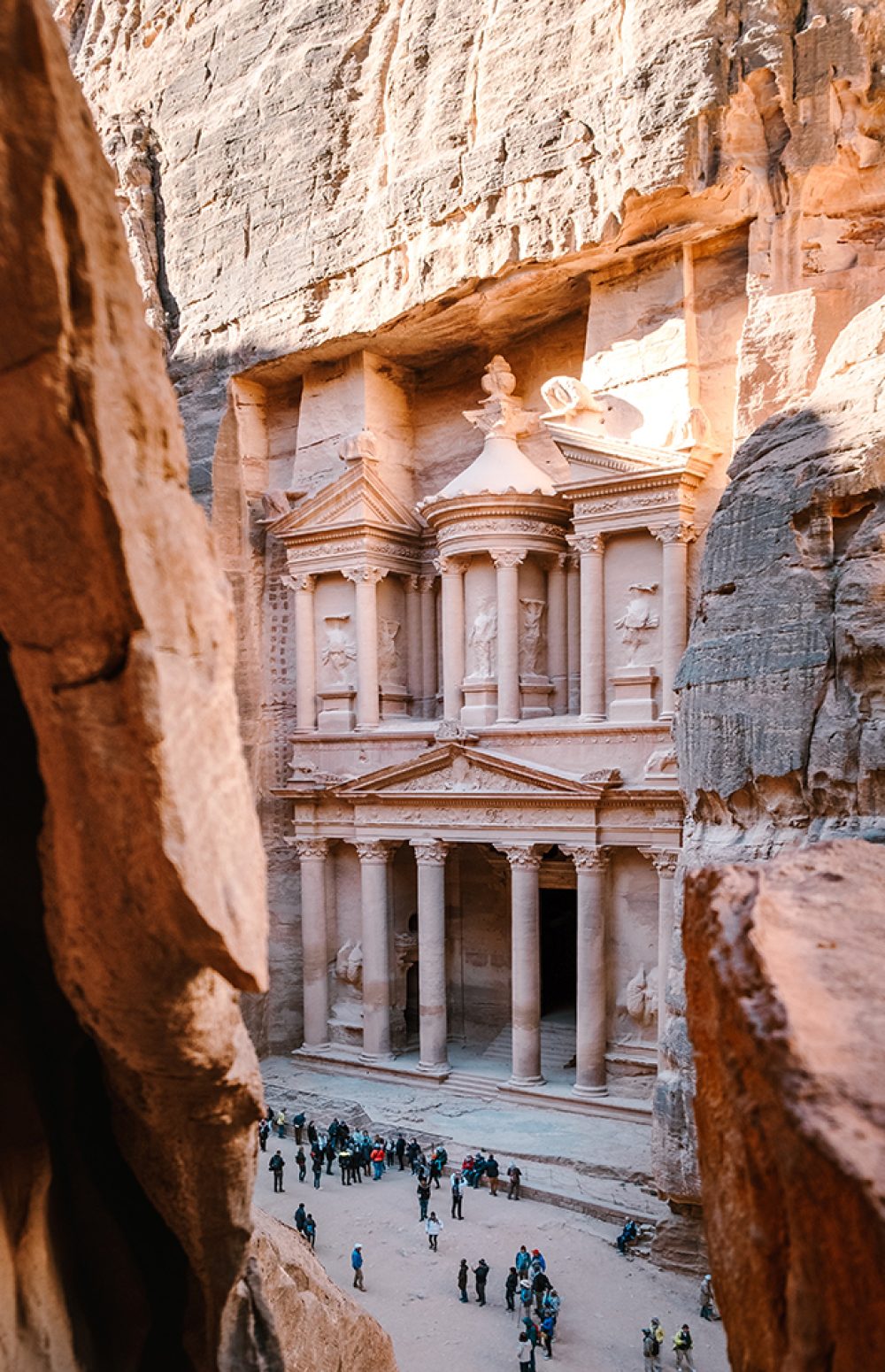

Languages spoken:
Arabic

Fun Fact
Etiquette in Jordan allows anyone offered a meal to refuse three times before finally accepting the invitation.

One reason you should go here
Float in the Dead Sea, the lowest water body on earth!
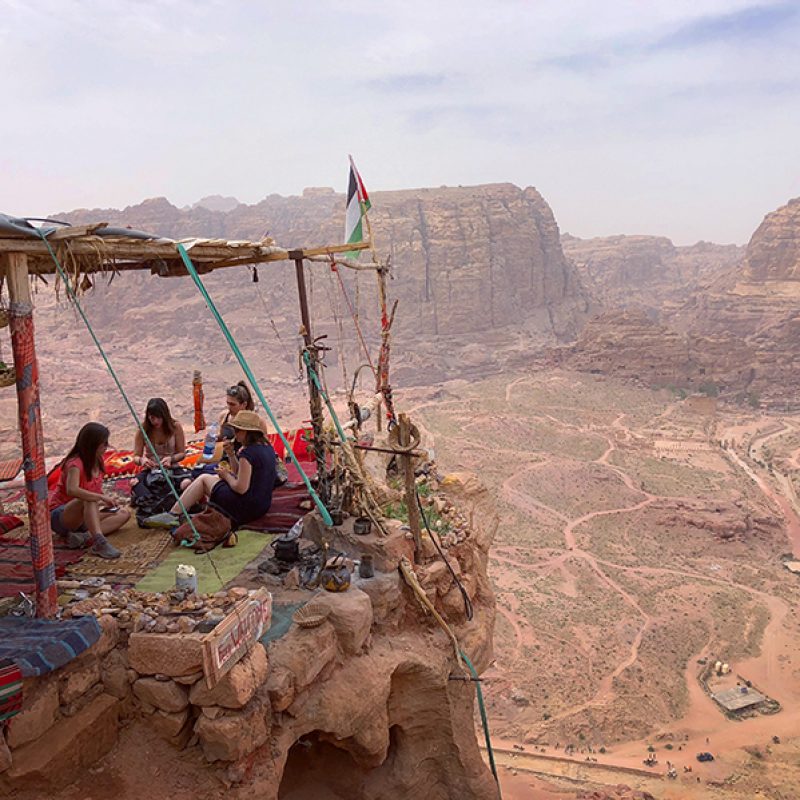
Travel FAQs on visiting Jordan
Jordan is located in the Middle East, bordered by Saudi Arabia to the south, Iraq to the east, Syria to the north, and Israel and Palestine to the west
Jordan is famous for its rich history and archaeological treasures, including the ancient city of Petra, known as the ‘rose-red city’—one of the Seven Wonders of the World. The Dead Sea, the lowest point on Earth, where the water is almost 10 times saltier than the sea. The Wadi Rum desert mirrors an extraterrestrial-looking location and is also a UNESCO heritage site.
As an iconic destination, Jordan attracts travelers for a cultural and adventurous experience with outdoor activities like jeep tours, hot air ballooning, star-gazing, rock climbing, and horseback and camel riding.
Setswana is commonly spoken in the region, although English is also widely used, particularly at the safari camps.
Summertime (June to August) is quite hot, with highs of 102°F. In contrast, snowfall is common in Jordan during the winter months (December to February), and the evenings can get rather cold, particularly in the desert areas.”
The addition of a comma after “hot” helps clarify the structure, and the insertion of a comma after “(December to February)” helps separate the contrasting information more effectively
